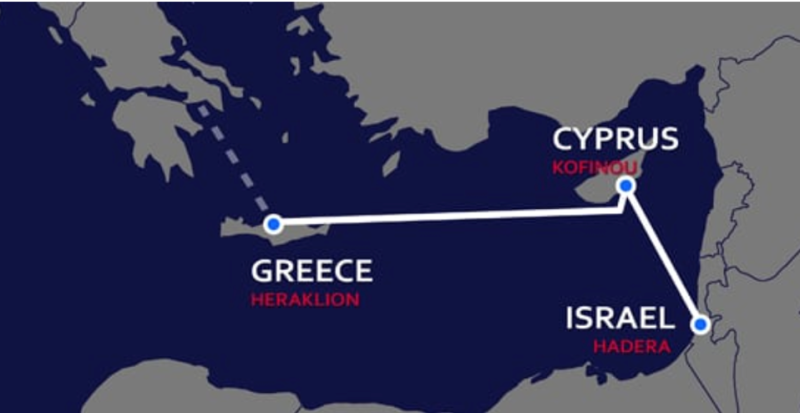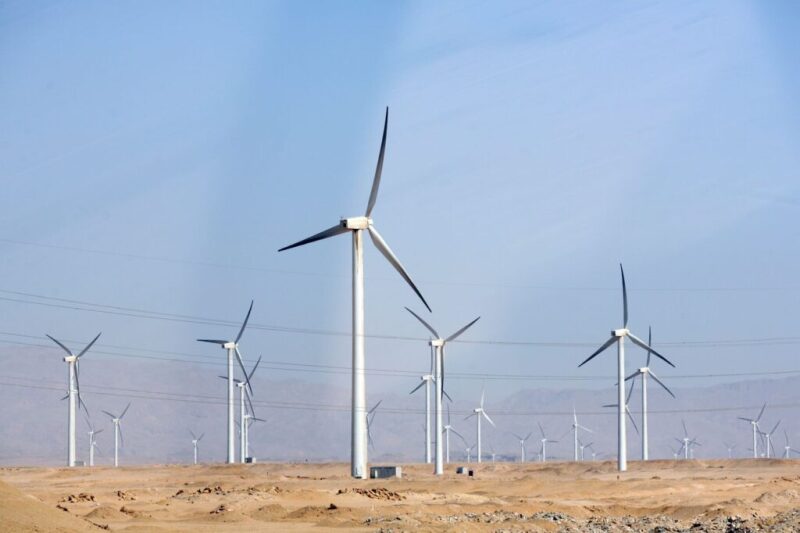Egypt moved closer to becoming a regional electricity transmission hub for the Eastern Mediterranean by clinching a deal with Greece to build the European Union (EU)-backed EuroAfrica Interconnector subsea cable to transmit renewable energy from North Africa to Europe via Cyprus.
The countries’ energy ministers, Kostas Skrekas of Greece and Egypt’s Mohamed Shaker, signed a memorandum of understanding (MOU) in Athens on 14 October to launch the process of negotiating an intergovernmental agreement and lining up finance by setting up a working group of senior officials, power grid operators, and energy regulators.
Talks laying the groundwork for the MOU signing took place in June when Greek Prime Minister Kyriakos Mitsotakis visited Cairo along with a delegation that included Energy Minister Skrekas (who met with Shaker, Egypt’s Environment Minister Yasmine Fouad and Petroleum and Mineral Resources Minister Tarek El Molla), according to local media.
Two days after Egypt inked the agreement with Greece, Cairo concluded a similar MOU with Cyprus which would also link its electricity grid to the interconnector.
The EuroAfrica Interconnector is a subsea system of high-voltage direct current cables (HVDC) between Egypt, Cyprus, and Greece that will cost an estimated 2.5 billion euros and have an initial transmission capacity of 1,000 MW, according to the project’s official website.
The Cyprus-Egypt segment is planned for commissioning in December 2022, with the connection between Cyprus and Crete commissioned in December 2023.

The deal comes through as Greece and Cyprus are also collaborating with Israel on the EuroAsia Interconnector, another EU project but somewhat of a competitor with its African cousin. EuroAsia would originate in Israel, but after reaching Cyprus it would follow the same route as EuroAfrica.

The Israeli Institute for Regional Foreign Policies (mitvim.org) contends that while Cyprus would benefit if both projects could be realized, the EU might not be willing to finance both (though it is actively promoting both).
The Egyptian government views the interconnector as a “prestige project” to strengthen Cairo’s strategic partnership with Cyprus, Greece, and the EU and it has hinted that it may be willing to bankroll the project itself rather than wait for EU financing, mitvim.org reported in a February 2021 analysis.
Israel, meanwhile, seems to have been focusing more on the EastMed gas pipeline (EMP) to carry Israeli and Cypriot natural gas to Greece and Italy.
In pursuing its goal of becoming an energy transmission hub to Europe for the Arab world, Egypt has been losing no time in lining up interconnection agreements with Jordan, Libya, and Sudan. Egypt’s most recent success came earlier this month when it concluded an agreement to build a $1.8 billion electrical connection project with Saudi Arabia.
As a source of electrical power itself, Egypt is emphasizing its strength in renewables as its geographical location is ideal for generating power from solar and wind.
The US Commerce Department’s International Trade Administration (ITA) Country Guide to Egypt published in September 2020 reported that Egypt is seeking private sector involvement to boost electricity generation from renewable sources to 20% by 2022 and 42% by 2035 under the government’s Integrated Sustainable Energy Strategy.
The strategy envisions 14% of that new power will come from wind, 2% from hydropower, 22% from photovoltaic, and 3% from concentrating solar power (CSP) over the next 15 years.
Egypt’s New and Renewable Energy Authority, under the Ministry of Electricity, is charged with implementing the plan. Egypt currently has about 500 MW of wind power plants in operation and 1,340 MW under development.
The ITA reported that Egypt has three privately owned independent power producers (IPPs), which generate about 2.5 GW and began operating in 2002–2003 under 20-year power purchase agreements with the state-owned Egyptian Electricity Holding Company.
Egypt’s renewable energy plan calls for implementing 3.2 GW from government projects by 2023, including 1.25 GW under build-own-operate contracts and 920 MW from IPPs.
The government approved its Egyptian Solar Plan in 2012 which aims to add 3.5 GW (2.8 GW CSP and 700 MW PV) of solar energy by 2027.
Most recently in 2019, the 37 km2 Benban Solar Park in Egypt’s Western Desert was completed with international investments including finance from the European Bank for Reconstruction and Development and the International Finance Corporation.
The park generates almost 1.5 GW of power collected from 32 individual plants, each producing 20–50 MW, according to the ITA.


